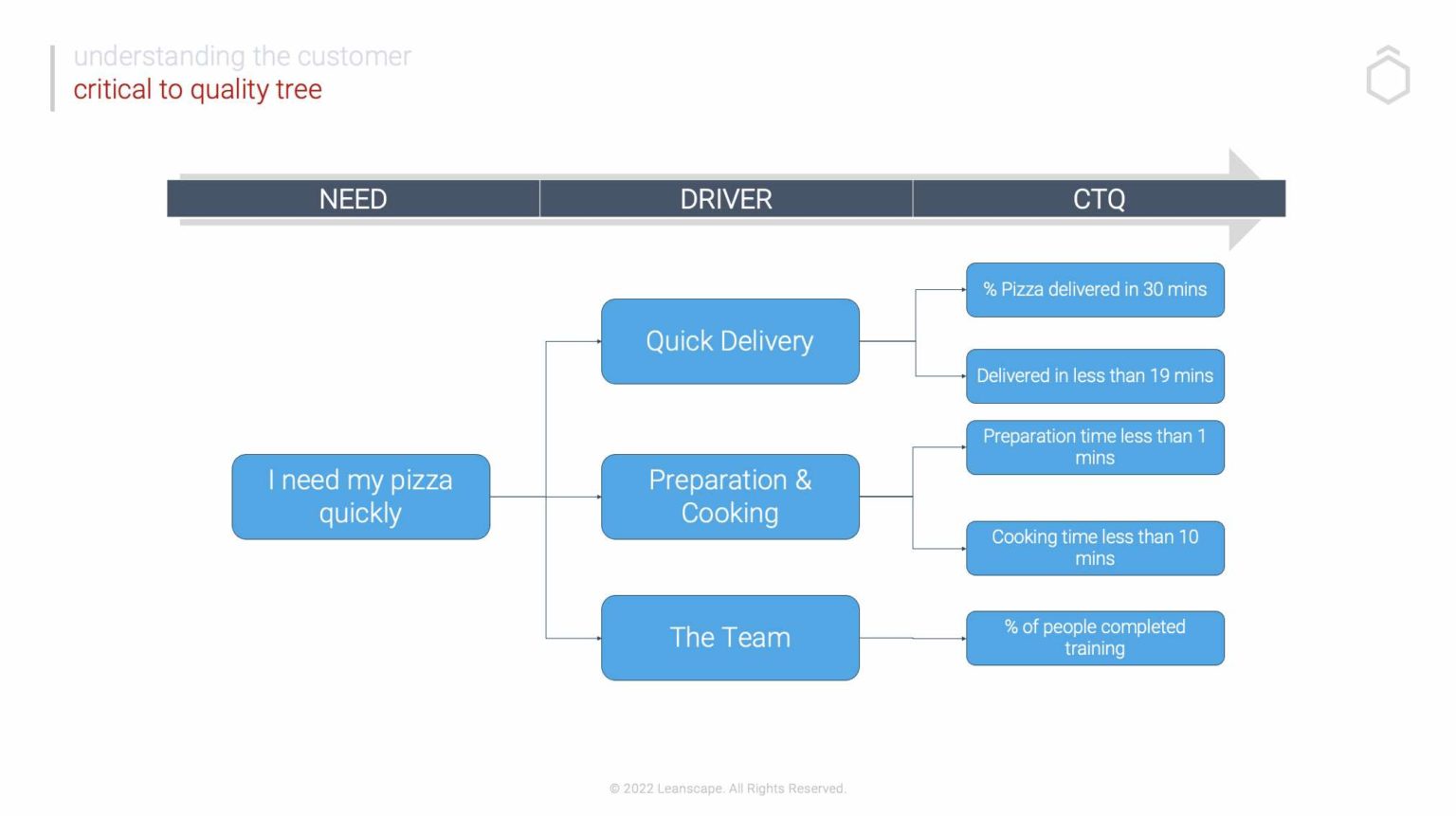In the world of Lean Six Sigma, the “Critical to Quality” (CTQ) tool is used to identify and assess the factors that are most important to the quality of a product or service. In other words, it helps you figure out what needs to be done in order to meet or exceed customer expectations. The CTQ tree is a structured tool within Six Sigma methodology that helps businesses translate customer needs into specific, measurable performance requirements.
The CTQ tool is used during the Define phase of a Six Sigma project. It is relatively simple to use and can be used individually or as part of a team. Here’s a quick overview of how it works. Integrating the CTQ tree into a quality management system is crucial for monitoring and tracking organizational performance, identifying areas for improvement, and taking corrective actions when needed.
What is Critical to Quality (CTQ)?
Definition and Overview
Critical to Quality (CTQ) is a quality management concept that focuses on understanding customer needs and preferences. It is a systematic way to translate customer needs into specific and measurable requirements for product and service development. CTQ is essential for producing high-quality products and services that meet customer expectations. By identifying the key characteristics of a product or service that are critical to quality, organizations can focus on the aspects that matter most to customers.
Importance of CTQ in Meeting Customer Expectations
CTQ plays a crucial role in meeting customer expectations by ensuring that products and services meet their needs and preferences. By understanding what drives customer satisfaction, organizations can design and deliver products and services that exceed customer expectations. CTQ helps organizations to identify the key metrics that measure customer satisfaction and to prioritize their efforts accordingly. By focusing on CTQ, organizations can improve customer satisfaction, increase customer loyalty, and ultimately drive business success.

Understanding Customer Requirements
Identifying Customer Needs and Expectations
Identifying customer needs and expectations is the first step in understanding customer requirements. This involves collecting customer data through various methods, such as surveys, focus groups, and customer feedback. By analyzing customer data, organizations can identify the key characteristics of a product or service that are critical to quality. Customer needs and expectations can be categorized into functional, emotional, and social needs. By understanding these needs, organizations can design and deliver products and services that meet customer expectations.
Organizations can use various tools and techniques, such as customer journey mapping, personas, and customer feedback analysis, to identify customer needs and expectations. These tools help organizations gain a deeper understanding of customer needs and expectations and prioritize their efforts accordingly. By focusing on customer needs and expectations, organizations can improve customer satisfaction, increase customer loyalty, and ultimately drive business success.
How to Use the Critical to Quality CTQ Tool
1. Identify your customer base and determine their needs and expectations. This step is crucial; if you don’t know what your customers want, you can’t possibly meet their expectations by addressing quality drivers. Surveying your customer base, either through one-on-one interviews or an online survey, is the best way to gather this information and understand their requirements.
-
Once you have a good understanding of your customer’s needs, start brainstorming what is critical to the process that creates the value for that customer and also what would address those needs. Make sure to involve as many people as possible in this step, as different people will have different perspectives on what might work best.
-
Once you’ve generated a list of possible critical items (Voice of the Customer), it’s time to start narrowing things down by assessing which solutions or elements are critical to quality. To do this, simply ask yourself, “Which of these solutions, if not handled properly, would result in an unacceptable product or service?” The answers to this question will help you identify the CTQs for your project and define the performance requirements.
-
Once you’ve identified the CTQs for your project, it’s time to determine how you’ll measure them. This step is crucial because you need to know whether your solutions are having the desired effect on quality. Create measurable targets for each CTQ and brainstorm ways to track progress towards those targets, emphasizing process improvement using CTQ tools in the DMAIC framework. Quality drivers play a significant role in evaluating products or services.
-
Now that your CTQs and corresponding measurement targets are firmly established, it’s time to put your plan into action and start working towards quality improvement by enhancing quality drivers! Implement your solutions and track your progress regularly; if things aren’t going as planned, don’t be afraid to go back to the drawing board and make necessary adjustments until you’re satisfied with the results. Improvements in manufacturing processes lead to satisfied customers, contributing positively to the brand’s reputation and profitability.
[repeat steps as necessary]
Conclusion: Meeting Customer Requirements
The Critical To Quality tool is an essential part of any Six Sigma project. It allows you to help ensure that you’re meeting or exceeding customer expectations by identifying the most important factors affecting quality. Although it’s a relatively simple tool to use, it can make all the difference in the success of your project, so if you’re working on a Six Sigma project, make sure to give it a try!



















